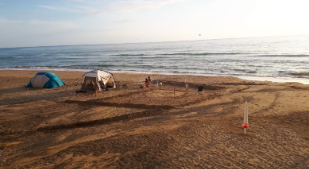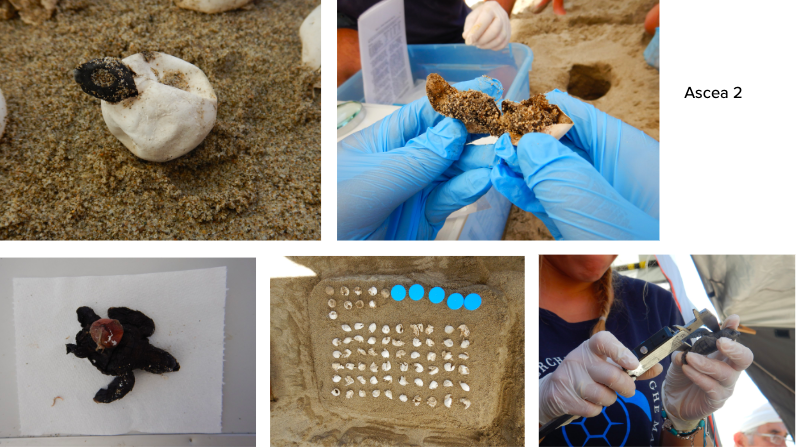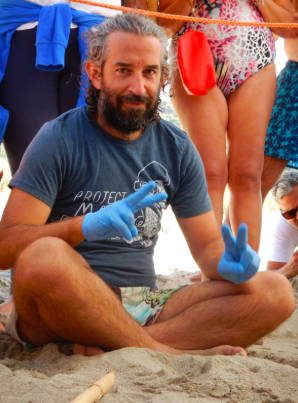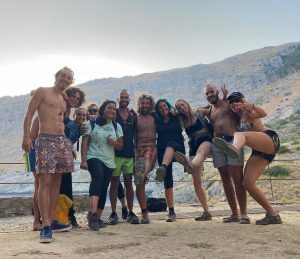Updated on October 9, 2019
Turtle Weekend in Cilento
September was the month of the turtles nest and Project M.A.R.E. was ready to go and assist with sea turtle (caretta caretta – loggerhead) nest monitoring. During all month of September we worked in 4 nest: At the beginning of the month there was one in Aseca and the end of the month there were two in Ascea and one in San Mauro. In this post we will speak about the last 3 nest, by our american intern Clare Srenshaw.
It has a global distribution, all around the Atlantic, Pacific, and Indian Oceans and the Mediterranean Sea. The average side is 90 cm, long carapace, 135 kg. They had a yellow-brown skin and reddish-brown carapace. Omnivorous diet, primarily benthic invertebrates.
Our campsites!
Let’s talk about the hatchlings!
The measure is around 4.6 cm and 20 g. The incubation temperatures range is from 26-32ºC and the sex depends also on the temperature.
28ºC -> males
30ºC -> equal mix
32ºC -> females
The incubation in around 80 days. Researchers use the chart (see next picture) to determine what stage of development unhatched embryos are at.
During the hatchling, researchers kept track of the number of eggs (hatched and unhatched). Swabbed unhatched eggs to test for parasite and fungus. Candle unhatched eggs to determine presence of an embryo. Took multiple size measurements of the hatchlings, as well as physical characteristics like scute count.
Ascea Nest 1
- 73 hatched eggs
- 64 unseen, found 7 alive and 2 dead when nest was opened
- The 7 were thin, weak, and abnormally shaped
- 64 unseen, found 7 alive and 2 dead when nest was opened
- 12 not hatched/developed eggs
- A few at stage 26-27
- Many hardly developed, maybe to stage minor 11

Egg collection and crowd in Ascea 
Opening the nest
Ascea Nest 2
- 59 total hatched eggs
- 55 unseen, 1 Wednesday night, found 3 alive when nest was opened
- 15 not hatched/developed eggs
- 1 pipping
- ~half developed to stage 26-27
- ~half not developed
San Mauro Nest
- 0 hatched eggs
- 66 not hatched/developed eggs
- 5 pipping
- 35 at stage 30
- 1 stage 29
- 25 at stage minor 11
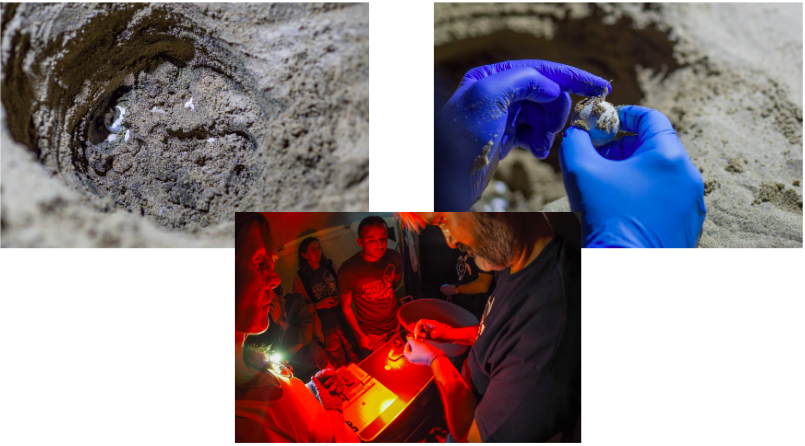
What went wrong?
- Ascea nests
- Due to temperature fluctuations leading up to the expected hatch date, they could’ve hatched early.
- OR the sensor used to take the measurements used to determine the hatch date could’ve been calibrated wrong.
- The 7 disfigured were likely trapped in the nest since the time the others hatched, potentially crushed by the others or the weight of the sand.
- San Mauro
- It had rained earlier in the week on Monday, which caused run off from the city to rush over the San Mauro nest
- If it had not, the eggs would’ve hatched within the expected range.







